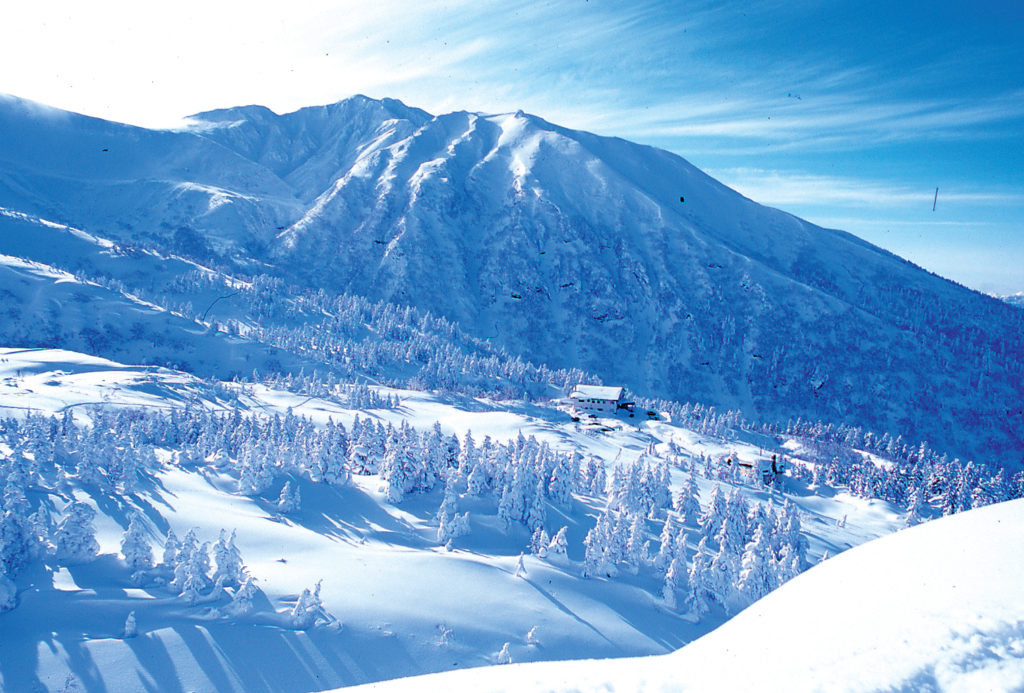Kamui Minara is a backcountry playland high above the valley where raw adventure meets mellow relaxation.

A long, long time ago, right here in this very galaxy, two huge tectonic plates collided off the coast of eastern Russia. For more than a millennium they rose out of the sea and formed the Tokachi and Hidaka mountain ranges right in the center of Hokkaido.
That is the short version of the geologic history of the northern island of Hokkaido and the central mountains. The story goes that Hokkaido was originally two separate islands that violently collided. The impact formed the natural playground we now know as the Taisetsu-zan National Park (also called Daisetsuzan National Park).
The indigenous Ainu culture here in Hokkaido has always respectfully referred to the Taisetsu-zan as Kamui Mintara or “Playland of the Gods.” Two thousand-meter peaks as far as the eye can see, steaming hot springs, an active volcano, rare alpine vegetation, deer and bears galore…it certainly sounds like a place fit for the gods. It’s a pretty cool place for the rest of us too.
For the last five or six years, the Tokachi area has been my winter playland. In an endless search for deep snow and good terrain to ride and shoot photos, my crew and I eventually made our way out of Sapporo and searched to the east.
From riding at Furano ski resort, I had often seen the Taisetsu Range across the valley. There’s a nice sticker on the window of the Furano gondola with the names of all the peaks across the valley. If the weather is nice, you can count them off. Asahidake, Tokachidake, Furanodake…
HEAVENLY BACKCOUNTRY
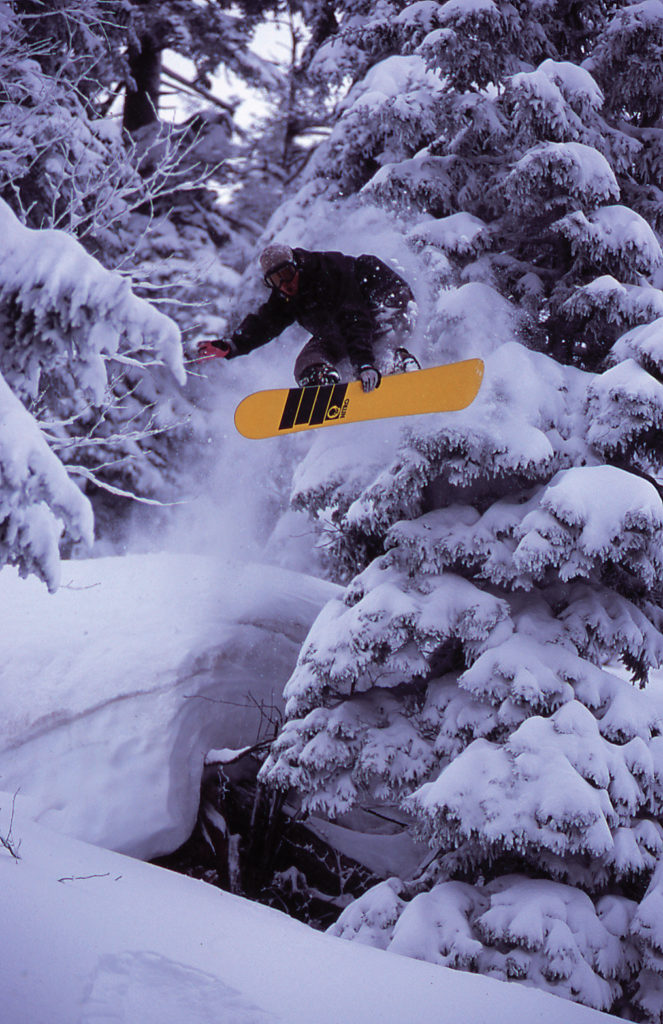
The day came when we finally made it across the valley, up to Furanodake and the famed hot springs at the end of the road called Ryounkaku. The view from the rotemburo (outdoor bath) is truly spectacular. On a good weather day or full moon night, the mountains stretch as far as the eye can see.
This is probably the most accessed area for backcountry skiing and boarding in the winter season here in Hokkaido. A three-hour hike from Route 291 will get you pretty close to the peak of Furanodake. From there, you must choose from two ridgelines or the nice bowl in between. The north-facing slope always seems to have good snow.
A little farther up, the road ends in the parking lot for the hot springs and Hotel Ryounkaku. A line of cliffs visible from the parking lot can make for a great day of riding with your friends. The conditions are not always perfect; this is, after all, high mountain terrain. If you are planning to head into the backcountry here, or anywhere, remember to always be properly equipped and trained. People have died within site of the parking lot, so be prepared no matter how near or far you are planning to go.
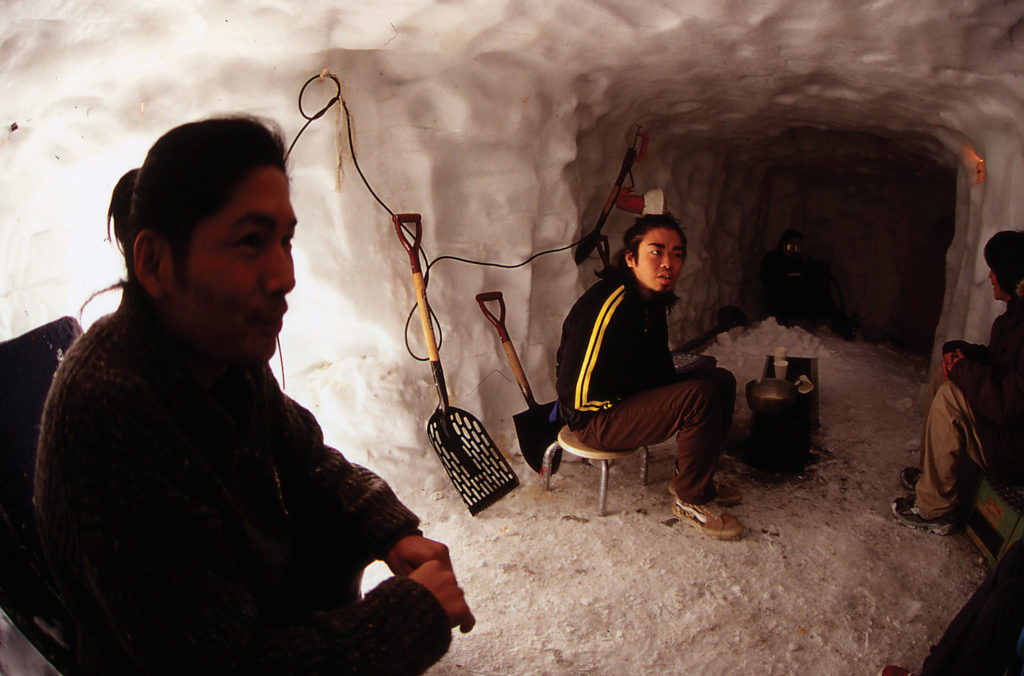
SOAKING IT UP
If hiking around in severe weather is not really your thing, the Taisetsu Range still has more relaxing options. How about some mixed bathing (konyaku) at Fukidashi Onsen.
Made famous in the TV Drama “Kita no Kuni Kara” (From the Northern Country), this free bath gets a bit crowded on weekends, as it is only a 100-meter walk off Route 291, but I guarantee it is worth taking off your clothes in front of strangers for a soak in this sacred water. Try to go on a full moon or new moon night for an unforgettable view of the stars.
A word to the wise: There are two pools, a small, upper very hot pool and a large, lower pool that is more tolerable. One night I went there by myself and found a young couple in the large bath. In a gentlemanly move I decided to head to the upper bath for a dip. I put my big toe in and thought I was going to die. So there I was, naked and too embarrassed to alter my plan. I had to suffer a scalding for about 10 minutes before heading back to my car, worried I would never be able to have children.
SPRING BOARDING
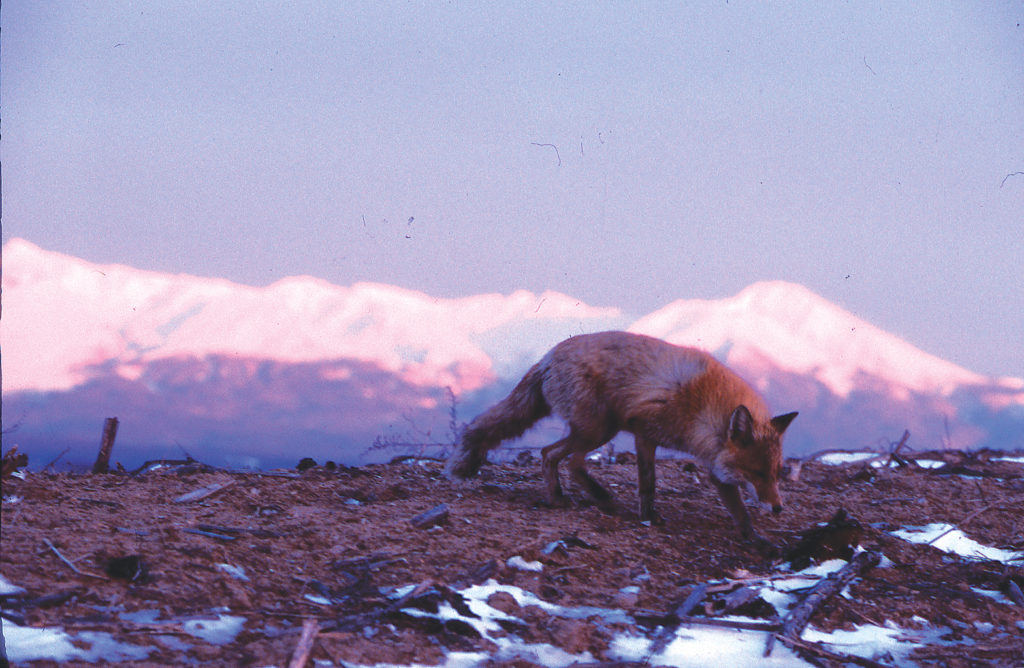
In spring, I often head a little farther north to the Asahidake / Tenninkyo area. Outdoor Japan’s own Ginger Vaughn climbed Asahidake and wrote about the mountain in issue #12. I have never climbed it in summer, but this is one of my all-time favorite spots for early and late season powder runs.
A few years ago, they replaced the old gondola with a brand new 100-person cable car that takes you straight to the top. The runs are simple cat trails groomed every morning, but it is the off-piste that is really fun.
Short and steep sections wait for those willing to hike a little bit after the Gondola ride. A word of warning, though; last season a good friend was buried up to his extended wrist. Another friend was able to see his hand and dug him out quickly. Even though there is a gondola nearby, it is still the backcountry out there.
Not into gondolas? Need a more remote experience? Time to head to the backside of the mountain range. Mikuni Pass is one of my favorite far-flung destinations. The lonely mountain road, Route 273, swings south from the northernmost point in the park. After passing through the Sounkyo Gorge, take a right and drive south along the eastern side of the range. The views are great, and make sure to watch out for the many deer in the area. You will probably want to spend a night in Nukabira, a quaint onsen town.
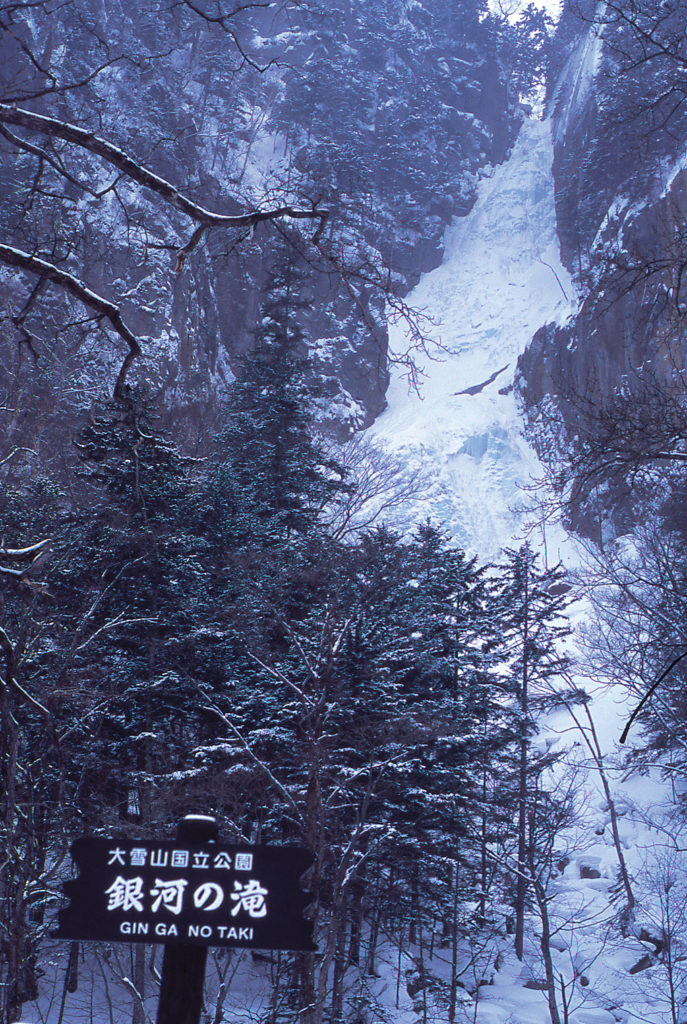
While soaking in the bath, you’ll have to choose from literally hundreds of sections and spots left to explore around the Taisetsu range. Tomuraushidake, Kita Taisetsu and the Sounkyo Gorge which hosts the Hyobaku (Ice Waterfall) Festival from late January to late March. Make sure to go at night when the ice village is lit up and stay for the Ainu drumming and fireworks display. The abundant hot sake should help keep you warm in the usual sub-zero temps.
June through July is lavender season in the nearby Biei and Kamikawa areas. With snow-capped mountains in the background and low rolling hills covered in lavender all around, there are post card shots everywhere. Route 237 runs north/south from Asahikawa to Furano, but try some of the back roads to avoid the tour buses and find that perfect uncluttered view.
It’s tempting to throw out my cell phone, close my bank accounts and spend the rest of the season like a fugitive chasing freedom in the hills of the Taisetsu Range. More likely, I’ll call my wife and tell her I’ll be home after a few more hours. It is here where you start to grasp the meaning of Kamui Mintara.
The Taisetsu Range is so immense, only the gods can lay claim to its entirety. For the rest of us mere mortals, it will take a lifetime just to scratch the surface.
